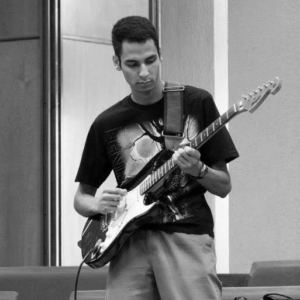| Felipe Leno Reinforcement Learning, Multi-Agent Systems, Supervised Learning, Computer Vision |
|
 |
Supervisor: Prof. Anna Helena Reali Costa
Location: São Paulo, Brazil Contact: f.leno [at] usp.br |
| About Me I received the B.S. degree in Computer Science from Pontifical Catholic University of São Paulo, São Paulo, in 2012, and the M.S. degree in Electrical Engineering (Computer Engineering area) from University of São Paulo, São Paulo, in 2015. I’m currently pursuing a PhD in Electrical Engineering at the University of São Paulo and I’m deeply involved in academic research activities since I started my Master’s, working as teaching assistant to undergrad subjects, journal reviewer, undergrad research project co-advisor, and overall as a researcher. I welcome new collaboration opportunities, just e-mail me. My research interests include Machine Learning, Reinforcement Learning, Supervised Learning, Multi-Agent Systems and Computer Vision. |
|
| Research Projects Transfer Learning in Reinforcement Learning Multi-Agent Systems Reinforcement Learning is a powerfull and autonomous tool to train intelligent agents. This learning is initially performed by sucessive interactions between agents and the environment, through trial and error, until the agent eventually has enough information to optimally perform its tasks. However, when multiples agents are present in the same environment, some sort of coordination is required, since the environment becomes non-stationary. Centralized approachs are usually infeasible, since the state space can be huge even for simple problems, thus, distributed approaches are required for many Multi-Agent domains. This research aims to develop a framework to accelerate learning in Multi-Agent Systems by applying Transfer Learning, which has been successfully applied in Single Agent domains, but has no robust algorithm to complex Multi-Agent domains.Automated Bee Species Identification through Wing Images Bees have a huge importance to pollination, and this fact motivated various researches focused on their conservation. However, some bee species are so similar that only a few specialized taxonomists are able to make a proper discrimination, and this difficult hampers the progression of these researches. This research studies methods to allow an automated bee species identification through computer vision and machine learning techniques applied to bee wing images. Our research unveiled that features extracted from wing images can be used together with supervised learning techniques to improve the species identification performance. Relevant Publications: |
|
| Other Passions • Music – I’ve been playing electric guitar since I was 15 years old. Even though I’m far to claim to be in level to professional musicians, you can count on me if you want to have fun playing some old good heavy metal. • Horror Movies – I was just a little boy when I first watched “Night of the living dead”. Thereafter I cannot spend a week without watching a B movie (specially the brain-eater zombie ones). |
|

